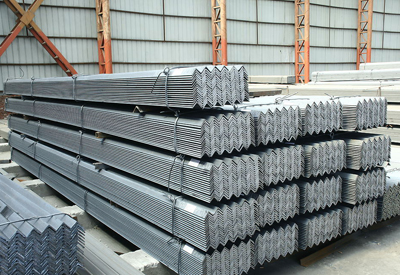【Ferro-alloys.com】: The main problems facing the industry are power cuts and high electricity costs, as well as a shortage of personnel
Despite a 15% increase in production since the beginning of this year and capacity utilization at 40–70%, the foundry industry is facing serious systemic problems. The main challenges are rising electricity prices, staff shortages, power supply disruptions that began in the fall, and a lack of coordination at the state level.
Production indicators
In the first nine months of 2025, the foundry industry produced approximately 350,000 tons of products. Production growth compared to the same period last year was approximately 15%. At the same time, production at some enterprises almost doubled.
The increase in production volumes over the first nine months is primarily due to exports of foundry products to Europe and other countries. It is exports that are driving the development of enterprises.
Currently, the production capacity of enterprises significantly exceeds demand for products, although these products are in short supply across all product lines. The capacity utilization of enterprises in the industry ranged from 40% to 70% in January-September. Enterprises are developing new types of products and working on additional areas, but these are still not the volumes that foundries are potentially capable of producing.
Main problems of the industry
The main current problems of the foundry industry include the following:
1. Increase in the cost of electricity.
Recently, the price of electricity for our enterprises has increased by 10–15%. This has significantly affected the competitiveness of enterprises that are heavily dependent on this cost factor, as electric furnaces are used in all technological processes.
Electricity accounts for 15% to 20% of the cost of production, depending on the technological characteristics, alloy grade, and production volumes. In addition, the higher the production volume, the lower the share of electricity, and vice versa.
As the cost of electricity rises, raw materials and logistics become more expensive. Thus, the impact of rising electricity prices extends to all components of production costs.
2. Power outage.
Foundries are not fully prepared for severe power cuts. Although they are flexible and mobile, they do not have sufficient working capital to equip themselves with gas generators, unlike steel enterprises, for example.
3. Shortage of personnel.
The industry faces an acute shortage of skilled workers for several reasons:
mobilization of workers;
reserved workers or pensioners are laid off due to downtime;
high-tech enterprises need highly qualified specialists, who are virtually non-existent;
new specialists with higher education mostly lack engineering thinking (seeing the situation comprehensively, solving shortage
problems, reading drawings, understanding technical documentation).
Demand by sector
Defense industry
The situation with demand from the defense industry has remained virtually unchanged compared to last year. The defense industry remains at the same level, with no surge in demand, which was expected and is necessary in wartime conditions.
Moreover, with the liquidation of the Ministry of Strategic Industries and its transformation into a department of the Ministry of Defense, the situation has become more complicated, since the Ministry of Defense is not tasked with dealing with industry. It would be better if strategic industries were transferred to the Ministry of Economy, where there are specialists capable of understanding and analyzing the situation.
At the same time, it cannot be said that when the Ministry of Strategic Industries was still operating, cooperation with it was extremely effective. The ministry did not perform the functions for which it was created: it duplicated the functions of the Ministry of Economy, the State Property Fund, and Ukroboronprom. There was no particular coordination between the ministry and the sectors of the economy.
Machine building
The situation in agricultural machine building has changed slightly:
Some factories are increasing production volumes, but other smaller enterprises are forced to close due to a lack of personnel.
Casting consumption is limited to small, lightweight castings. The maximum weight of castings now rarely exceeds 5 tons, with an average of up to 1 ton. The main products are small castings for soil cultivation units and other products. There is no production of heavy parts (engines for tractors and combines, machine tool beds weighing from 500 kg to 15 tons).
At the same time, the situation in railway engineering has deteriorated significantly. There are several reasons for this:
there are no expected orders from Ukrainian Railways;
the largest foundry in Kremenchuk is idle due to the lack of orders from Ukrainian Railways;
there is a continuing outflow of personnel, and it is practically impossible to find new employees or quickly train replacements.
The most significant customers for the foundry industry are power engineering companies. There are still specialists there, although the production process is fraught with great difficulties. The rest of the engineering industry depends on exports. Even if a company wins a tender, it is not certain that it will be able to fulfill it due to a lack of specialists.
Infrastructure
There have been virtually no changes in the field of infrastructure construction:
there is no post-war industrial recovery program;
there are no orders from the utilities sector (reinforced castings, manhole covers, pipes, fire hydrants), although all of these are needed;
the priority is to supply the front lines and eliminate the consequences of shelling.
Forecast for 2025
Initially, we expected to produce approximately 100,000 tons of products by the end of this year, but these plans were jeopardized by power outages and high electricity costs. It is expected that by the end of the year, we will be able to reach an estimated 400,000 tons, although the initial plan was 480,000–500,000 tons.
Despite the current industry problems, Ukrainian foundries are able to fully meet the needs of domestic customers and replace imported products.
- [Editor:Alakay]



 Save
Save Print
Print Daily News
Daily News Research
Research Magazine
Magazine Company Database
Company Database Customized Database
Customized Database Conferences
Conferences Advertisement
Advertisement Trade
Trade















 Online inquiry
Online inquiry Contact
Contact

Tell Us What You Think